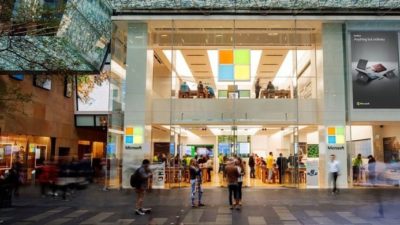This article was originally published on Fool.com. All figures quoted in US dollars unless otherwise stated.
Any investor expectations for 2020 were soundly destroyed by March, when the COVID-19 pandemic started to spread in earnest across the United States. Shutdowns forced everyone to rethink their priorities -- simply getting the basic things you needed to shelter in place proved a challenge in itself.
The coronavirus pandemic is still with us, but the world and its consumers have adapted. Look for people to start applying their new preferences to how they think and shop. Four trends, in particular, are poised to take centerstage. Investors would be wise to note them for the year to come.
1. Private-label mania
So-called store brands have been gaining traction for years, when retailers stopped treating them like mere white-label goods and starting putting them in packages that look more like the national brands they compete with. But the economic fallout from the COVID pandemic sparked something of an awakening among consumers. A poll taken by marketing and branding agency Ketchum in the middle of the year indicated that 63% of U.S. consumers intend to purchase more private-label goods in the future after a lack of availability of their usual brand of goods forced them to try the alternative.
Big grocers like Costco and Walmart have done well with private-label goods, leaning heavily on their flagship brands Kirkland Signature and Great Value, respectively. Target can do the most with the growing disinterest in recognized brand names and has created almost 50 of its own in-house brands of food, clothing, and home goods.
Data from market-research outfit Numerator indicates more than 13% of U.S. households bought one of Target's Good & Gather branded food items in 2019, though the label only launched in August of that year. Just a couple of months ago, Target unveiled premium versions of Good & Gather items to appeal to consumers seeking above-average quality but who are not interested in paying above-average prices.
2. Corporate responsibility matters more than ever
The public has always kept a fairly close eye on corporate behavior. But in the wake of this year's social and political turbulence, consumers have become keenly aware that some corporations may be doing the world more harm than good. Brand-management agency Zero Group's "2020 Strength of Purpose" study quantifies the premise, suggesting that consumers are four times more likely to do business with a company with a strong purpose no matter what that (presumably good) purpose may be.
Investors looking for a simple way to find ethically oriented companies don't necessarily have to dig into every available data nugget about every organization. Environmental, social, and corporate governance, or ESG, ratings are readily available for most companies, easily indicating a corporation's contribution to society beyond its bottom line. It will therefore come as little surprise that stocks with strong ESG scores tend to outperform stocks of less-responsible companies.
3. Direct-to-consumer is getting traction
The rise of direct-to-consumer (D2C) shopping and shipping has been deemed a threat to Amazon.com for years now, but it hasn't yet rattled the king of e-commerce. Market-research company eMarketer estimated earlier this year that D2C sales would only reach a little less than $18 billion this year, en route to $21 billion next year. For perspective, Amazon's generated around $350 billion worth of revenue over the course of the past four reported quarters.
The D2C market may be poised to expand much faster much sooner than one might expect, however, thanks to this year's COVID-19 nudge. Consumer-monitoring outfit Diffusion reports that 30% of U.S. consumers purchased an item directly from the manufacturer within the past year. It's not a lot, but that proportion is growing.
This trend puts names like Shopify and BigCommerce in the spotlight, as both companies help small and large manufacturers sell directly to consumers outside of Amazon's ecosystem.
4. Beyond omnichannel, into personalization
Finally, most major brick-and-mortar retailers also offer online shopping and at-home delivery. Many offer at-store pickup of items bought via the internet, as well. These multiple paths to a purchase and pickup are the seamless omnichannel experiences so many chain stores have been working to build for several years. But consumers expect more now.
Shoppers are no longer impressed by being able to buy and receive products in any imaginable way (sometimes getting their online order delivered the same day it's placed). They increasingly expect retailers to also act as service providers and even predict what they'll need and how they'll want to get it.
What this looks like in practice depends on the consumer and the company in question. For Amazon, it's teaching its Alexa-powered assistant technology to think proactively about what a particular person might want to buy in the future based on that person's current vocalized requests. For athletic-apparel name Nike, it's the ability to fabricate a shoe that's custom-designed online exclusively for and by that consumer. For Walmart, it's the use of in-store tech that turns a shopper's smartphone into a tour guide of sorts to create "an instant omni-shopping experience in the customer's mind."
However it manifests, the companies that can deliver a seamless, customized, hassle-free shopping experience for consumers stand to win market share.
This article was originally published on Fool.com. All figures quoted in US dollars unless otherwise stated.









